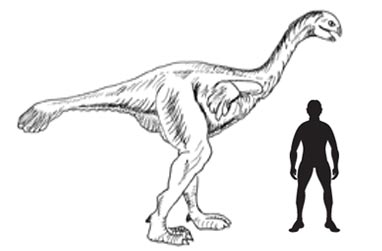Episode Two of Planet Dinosaur – Feathered Dinosaurs
Some of the most important dinosaur discoveries over the last twenty years or so have come from the Liaoning Province of north-eastern China and it is these exciting feathered dinosaur finds that dominate episode two of the BBC’s new dinosaur television series. The programme featured a myriad of cursorial (some arboreal) dinosaurs that roamed around the lush forests of this part of the world during the Cretaceous. Great to see a Microraptor gliding from tree to tree, using its feather covered limbs to pursue its prey and to escape from potential predators. Microraptor may be quite well known to the general public, but we doubt whether many viewers would have come across Epidexipteryx before. This pigeon-sized dinosaur, with its bizarre appearance certainly showed viewers how diverse the dinosaur clade was. In episode one, it was all about big theropods, now in the second part of this six part series the production team want to show us just how unusual some dinosaurs were and Epidexipteryx was portrayed as an animal at home in the trees, using its long fingers, especially its extended second finger to dig out beetle grubs in the same way as the secretive Aye-Aye (Daubentonia madagascariensis) does.
To read an article on the discovery of Epidexipteryx: Is it a Bird or a Plane? No it is Epidexipteryx!
Take the feathered hunter Sinornithosaurus, the narrator alluded to the controversial paper published in 2009 that proposed that this fast-running predator may have had a venomous bite. It is always refreshing to see some of the latest ideas and discoveries brought to life, the fast paced direction helped animate these dinosaurs and give the impression of creatures that lived “life in the fast lane”. The more recent research (2010) into the diurnal or nocturnal characteristics of certain dinosaurs got a mention. This refers to the widely publicised study into the orbits (eye sockets) of theropod dinosaurs: the point we made at the time, one that the CGI backdrop designers miss, is that these forests were probably dark with lots of thick undergrowth. The study of the orbits of dinosaurs would need to consider the possibility of these animals hunting in low light levels.
Planet Dinosaur
Whether the feathers were for flight, display or insulation the programme provided an insight into our increasing knowledge of “feathered dragons”. So pleasing to see “Big Bird) – Gigantoraptor (Gigantoraptor erlianensis) featured, certainly based on the fossil evidence this is likely to be the largest feathered animal known in the current fossil record.
To read an article on the discovery of this dinosaur: New Chinese Dinosaur – Gigantoraptor as Tall as a Giraffe.
A Drawing of Gigantoraptor erlianensis
Picture credit: Everything Dinosaur
Credit must be given to the programme makers for the imaginative way in which they have brought to the screen some of the recent feathered dinosaur discoveries.
For feathered dinosaur figures and replicas: Feathered Dinosaurs and Other Models (Wild Safari).







Leave A Comment